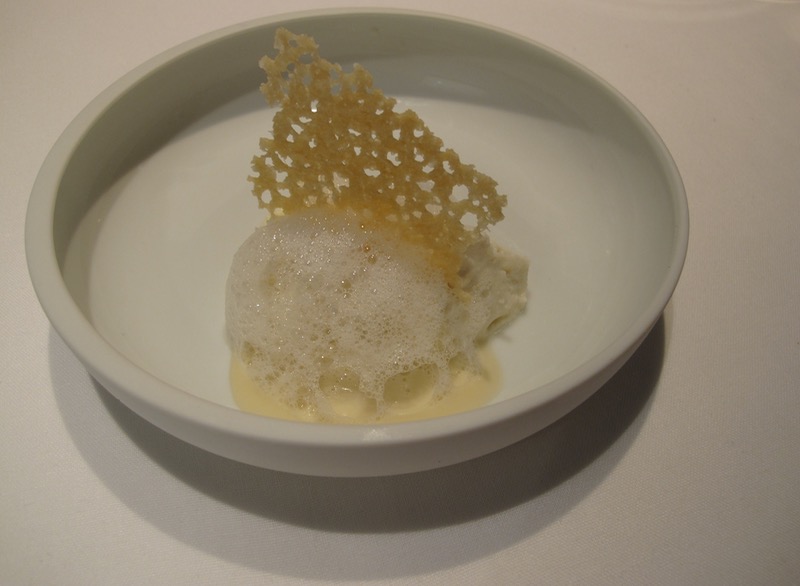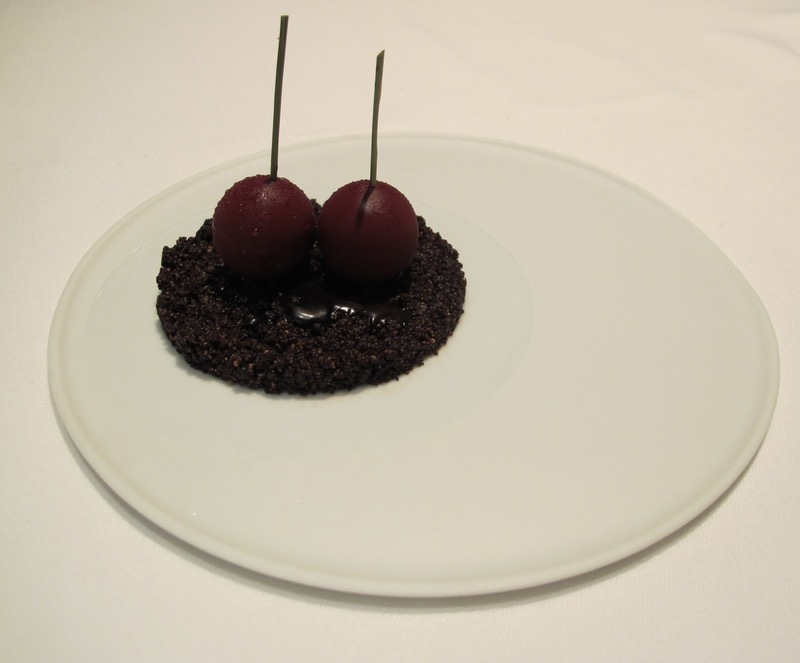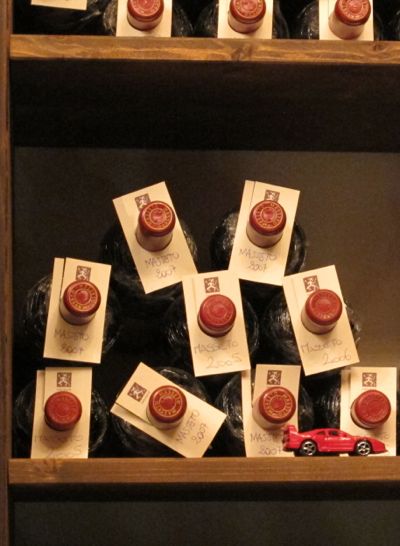Osteria Francescana: contemporary Italian storytelling featuring Modena's best ingredients
Massimo Bottura is the genius of contemporary Italian cuisine. We were so mesmerized by his food, that Osteria Francescana became the first three-Michelin-starred restaurant at which we dined twice in the same day – lunch and dinner. There cannot be a dispute about the brilliance in the evolving chef’s visionary transition of traditional Italian ingredients into the works (plates) of delicious art. Rather than feeding his diners with the familiar classics of Italy’s distinct regions, dining at his Osteria Francescana in Modena means exploring philosophy and reality of life on the plates. He unashamedly deserves to bear the recognition as the “World’s best chef” awarded to his rather off-piste Osteria in 2016.


As much as being an unforgettable experience of a hedonistic pleasure, Bottura’s dishes make you think and wonder about their deeper meaning. Like the meals in Italy filled with emotions, the chef’s creations do not lack a pinch of emozione that is poured directly into their own bloodstream. He could have been the mama behind the stove of a village trattoria, convinced of the perfectness of her food. In person, he is proud, passionate, intensely articulate, and his discourse mesmerizes anyone interested in food [just look at the photo at the bottom of this review].
His muses, the ingredients, are mainly found around his native Emilia-Romagna.


As most revolutionaries and prophets of progress, the intrepid chef attracted many adversaries, disbelieving his culinary oeuvre, and mocking him for ruining by-generations-perfected Italian tradition of simple mangiare [=eating]. Yet, his intelligence rebooted the naysayers. Bottura explained to us during our private encounter, when dining inside the wine cellar for the second time in the same day, that he is not trying to change the Italian traditional foods for the sake of the change itself. He enunciated carefully, that “innovation is important for progress“, and this drives him, but also that he enjoys “feeling the ingredients and thinking deeply about them”. When the chef is trying to find the ingredients’ soul, getting the best of what they have to give, he can better understand the secret of their appeal to our palates. “We think a lot together in the kitchen“, said in a brief state of nonchalance the master brain behind the World’s best restaurant and the first chef in Italy to achieve this distinction.
Osteria Francescana fully deserves this coveted spot at the peak of the global restaurant pyramid. Although, one cannot uproot and totally dismiss the everyday pleasure from the simple traditional Italian dishes like pasta bolognese, risotto with saffron, Milanese ossobuco, breaded Veal Milanese or Ligurian troffi with basil pesto, that all easily satisfy our grass roots cravings. Osteria Francescana is not an everyday meal, it is that rare treat when one dines there filled with a gastronomic curiosity on certain special occasions.

When his hearty personality reaches out to you, there is no escape from connecting and embracing his artsy ideas. Like in his dish “Oops! I dropped the Lemon Tart” the chef splashes out sweet and sunny energy all over the plate. Needless to add, although it does not look like the perfect pretty cake, it tastes superb! The chef trained with the world’s best chefs from Alain Ducasse, who took him to his deluxe culinary incubator at Louis XV. in Monaco, to Ferran Adria at the former World number one El Bulli (closed) in Spain. Ducasse’s teaching shows in dishes like the “Abstract of prosciutto and peas Tagliolini“, a pure and intriguing broth focused on the lightness of seasonal vegetables. The deconstructed “Five Ages of Parmigiano Reggiano in Different Textures and Temperatures” were so different and unexpected, that El Bulli would have featured it if it were still in operation. The Parmesan became the most memorable culinary creation for me, and a great news for the future diners is that it is a permanent fixture on the signature menu: TRADITION IN EVOLUTION.

We indulged in this multi-course menu for lunch (€170 – a special occasion, not a daily trattoria), while sampled other plates à la carte for dinner. I learned that intuition has always been in Bottura’s repertoire of skills combined with his intelligence and a penchant for contemporary art. While the later has yielded an artistic collaboration with the talented painter Damien Hirst in which the craft of one inspired the other, his intuition drew him to cooking instead of working in his family’s oil business (with the Ferrari factory nearby almost everyone is somehow involved with the car industry) as he dropped his studies of law in order to open a small trattoria.
The British artist became the chef’s conceptual muse. His hallucinogenic spin paintings are mirrored in the casual plate of “veal” that is actually a piece of beef cooked sous-vide (in a vacuum) with an ash, all splashed over with colorful sauces evoking the Hirst’s style on a canvas. The “Beautiful, Psychedelic, Spin-painted Veal, Not Flame Grilled” also became the object of the artist’s new painting. Another, this time, a local artist Giuliano Della Casa, has been painting the menus with watercolors in exchange for food and drink at the restaurant. It seems to be an Italian passion since I also saw hand-painted menus at one restaurant in Piedmont.

Another favorite of mine and many other diners on the signature menu “An Eel Swimming Up the Po River”, stuns even the most refined Japanese palates, accustomed to their country chefs’ mastery of preparing perfectly this sea snake (eel). It might look very simple, but this dish takes a week to prepare, as the chef confessed. The eel possessed one of these flavors that your brain hardly forgets. Intense, yet delicate, deep yet refined, sweet and sour, dry and moist. Contrasts of flavors unsurpassed in the world of eel dishes. Like most of Bottura’s creations, these contrasts played harmoniously like a perfectly conducted orchestra. The instruments of the eel with a syrupy sauce of saba, a reduced grape must be used in making of balsamic vinegar, Amarone from Veneto, and sprinkled with burnt-onion-powder “mud” contrasted the more sweet apple extract as well as the creamy polenta sauce. The idea behind the dish came from a historic event when during the 16th century the Estensi family had to leave the capital Ferrara for Modena. Traveling against the current, the dish gathered ingredients typical for the regions the boat had to pass. This idea earned him praise globally and this plate became one of the iconic fine dining creations of our time as it entered the gastronomic world’s vocabulary.
The lettuce might look like a joke in a €170 costing menu, yet the “Caesar Salad in Emilia” again is not that simple as it looks. An abundant discovery of local flavors hidden inside the lettuce heart shield awaited in each mouthful. Discover yourself and your taste buds what is inside.
The tasting menu highlights the local ingredients with the prominence of top quality Balsamic Vinegar. In the “Foie Gras Ice Cream Bar with Traditional Balsamic Vinegar from Modena“, the crunchy caramelized almonds and hazelnuts and extra-old Traditional Balsamic Vinegar from Modena coat like a lolly the creamy foie gras. The chef himself makes an award-winning Traditional Balsamic Vinegar, that he ages in the attic of the Museo del Balsamico Tradizionale in Spilamberto. He poured us a half spoon of this super thick delicacy to taste, and I could not stop licking the spoon long after the content was gone. Addictive and dangerously good!


It is rare to like every single morsel on a multi-course tasting menu, including the homemade slowly raised bread and small extras before, between and after the sequence of the chef’s creations, but we did. The chef’s sensitivity to details and his self-proclaimed approach to cooking: “First is taste, second is health and then comes the dishes capability to intrigue and engage your brain“, made even the basic grissini one of the best I had ever crunched. Crispy yet soft, full of fragrance from the olive oil used in its baking. Indeed, as with pasta and bread, the success lies in a patient mastery of the process, and at the Osteria Francescana they got it right.
The dozen tables restaurant nestles in a small pedestrian alley in the historic medieval heart of cobblestoned Modena. The city, where the chef was born, and in 1995, after return from his global self-discovery, opened the now famous restaurant, on the spot of a casual Osteria Francescana, the name of which he kept. His private collection of contemporary art does not hang only on the wall of his home, but also adorns the intimate rooms of the restaurant. Right after entering you might be slightly shocked or amused by a trio of stuffed pigeons by Maurizio Cattelan, but there is more to be found in each room to explore in terms of controversial art for your eyes and your taste buds. Music, another passion of the chef, penetrates smoothly into your ears while you dine. I loved the jazzy tunes since I often miss music and a more entertaining atmosphere at most of the austere ambiances of many high-end restaurants.

From the a la carte menu in the evening, we tried the for starter the delicate spring-evoking “Terrine of lightly smoked cauliflower with red shrimp and Calvisius Oscietra Royal caviar “, and a chef’s sweet and sour take on a local sausage “From Modena to Mirandola: cotechino and zabaglione” with Lambrusco and the egg-yolk rich zabaglione. The main course of “Suckling pig with crispy skin and Traditional Balsamic Vinegar from Modena” was rich, deep, balanced and meaty as one would expect, yet my husband who is not a pig lover loved it. The Mediterranean “Branzino in an infusion of fragrances from the Gulf of Sorrento” was respected by the chef. Sea Bass at its best is served simply, so his delicate nature is not diminished by sauces and other ingredients, yet the chef found the perfect balancing act in adding just the fragrances found around the Mediterranean – a natural symbiosis.

A small crunchy ‘tartine’ of dark chocolate topped with a pair of thin-crusted chocolate cherries is inspired by a nearby town Vignola, known across Europe for its superior cherries Mora di Vignola. These sweet, dark-skinned cherries are as rare as seasonal – only late May and early June provide men with these delicate sweet and slightly sour tasting fruit grown around Vignola. Bottura created a reminiscence of this praised local cherry in its liquor filling the chocolate, and made it thus available for its fans throughout the year. More dark chocolates were to come with our tea, seducing us to another sweet temptation. One must try them all since these morsels molded from cocoa could proudly contest with the best chocolatiers in the world. The tiramisu ball enrobed in an extra fine layer of dark chocolate, popped with the pressure of my tongue splashing the liquid coffee cream inspired by tiramisu inside my mouth. I sighed with a pleasure, and the chef himself seems to be particularly fond of this sweet treat.
It looks like we ate the entire Bottura’s menu in one day, and indeed we tried most of it. We were intrigued by his refreshing talent. The three stars from Michelin, three hats by Gamberro Rosso, Number three restaurant in the world, all the accidental!? ‘threes’ are deserved awards for rebellious hard work and striving for innovation in a country where tradition is as sacred as the Pope himself. The chef mostly cooks at his restaurant in Modena, but now he also makes culinary trips (he was cooking in Tokyo at the Bulgari restaurant in Ginza) and attends the chefs’ symposia (‘Cook it Raw’), so you may miss him. Contrary to most of his top-ranking colleagues, he devotes only necessary time to the celebrity chef duties like TV appearances (watch him on CNN’s “Culinary Journeys”) and life culinary shows.


Drinking well at Osteria Francescana
Next to the Tuscan heroes and Piedmont big-ticket Barolos, the wine list offers also interesting pickings from more and lesser known Italian regions. The wine pairing (add €110) alongside the tasting menu was a revealing journey into the diversity of Italian wine. In the cellar, you find bottles of Masseto, one of the country’s most expensive wines, fronted by red Ferrari as an allegory to their high value. An aperitif of Italian spumante – Annamaria Clementi Ca’ del Bosco – was deep and complex, and could easily compete with very good vintage champagne from France, while the orange wine, the local beer, and other surprising pairings fitted perfectly like a cork in a wine bottle. Since we were eating inside the wine cellar we splurged on a 1998 Ornellaia and a very interesting and surprisingly light Sicilian bottle of red Frappato by Occhipinti.
For the genuine gourmets eager to eat what the season and chef together ripen, the seasonal plates in a surprise tasting menu called SENSATIONS can be an interesting choice. If you are just hungry for an inspiration or a creative muse in the home kitchen, read the best-selling book by the chef titled ironically “Never Trust a Skinny Italian Chef”. The chef being thin himself, highlights his approach to everything – flip things to make others question the conventions, but make it work.

🕗 Open for lunch & dinner Mon-Fri; dinner only on Saturdays; closed on Sundays and each January.
✉ 22 Via Stella, Modena, Italy
☏ +39 59 22 39 12
NOTE: Beware, there is no parking in front of the restaurant, since it is located in the historic center of Modena you will need to walk, but the restaurant will send you instructions for parking once your reservation is confirmed. Every single reservation at Osteria Francescana must be confirmed the day prior your visit otherwise it will be canceled.

